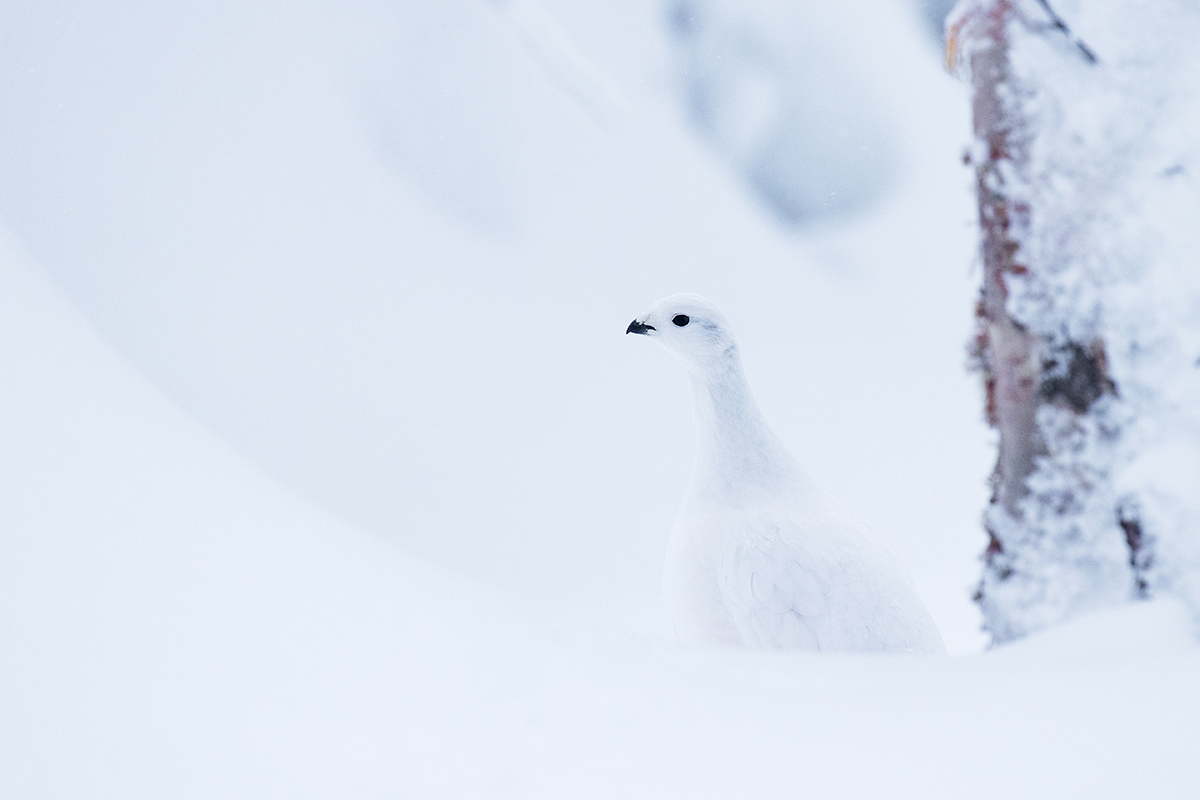The main objective of species protection is to ensure the favourable status of all naturally occurring species
Each species has a role to play in the biosphere. Due to the abundance of species and their roles, overall biodiversity is preserved. Unfortunately, many species have become endangered or extinct as a result of human activity or other causes. Today, species go extinct 100–1,000 times faster due to human activity than they would in the course of natural evolution. For example, since 1990, humans have destroyed 75% of crop genetic diversity, 75% of the world’s fish stocks, and 20% of tropical coral reefs. In addition, economic activity is estimated to destroy about 10 million hectares of forest per year [1].

What is species protection?
Species protection has been part of classical nature conservation since the middle of the nineteenth century, when people started protecting the first natural rarities and establishing the first protected areas. The world’s first national park, Yellowstone, was established in the United States in 1872. However, awareness and addressing of environmental problems and environmental conservation in the modern sense was only reached in the last half a century. The beginning of nature conservation activities in Estonia is thought to be 1910, when the Vaika bird protection area was established to protect birds; it is now a part of the Vilsandi National Park.
The main objective of species protection is to ensure the favourable status of all naturally occurring species, including subspecies and populations, to preserve species diversity in all its manifestations, and to prevent the introduction and spreading of alien species and populations and the negative effects of genetically modified organisms.
However, species protection also includes, for example, a ban on trade in protected species, the treatment of injured animals, and the inclusion of their migratory routes in the planning of roads and green networks. From the point of view of the preservation of species, it is also important to preserve the breeding, roaming, and feeding grounds unique to different species, which is why, in addition to the protection of specimens, species protection also includes the preservation and restoration of habitats and limiting human impact.
Endangered and rare species are divided into protected categories, and in addition to traditional protected areas, limited-conservation areas and species protection sites are established to protect their habitats.
An ecosystem-based approach is needed
The ecosystem-based approach makes it possible to protect ecosystems – independent systems of living organisms and lifeless environments – and landscapes as an interconnected network. This approach is being pursued in the European Union, for example through the Natura 2000 network. An important advantage of the ecosystem-based approach is taking into account the benefits of nature, i.e. ecosystem services. The benefits of nature are the products and services that nature provides to humans; they are divided as follows:
- provisioning services that humans receive from the ecosystem in the form of, for example, food, water, timber, etc.;
- regulating services that affect the climate, the quality of water, air, and soil, water resources, floods, etc.;
- life-supporting services such as the biogeochemical cycle, soil formation, photosynthesis, insect pollination, habitats;
- cultural services through which nature offers people aesthetic and spiritual enjoyment, places of relaxation, and new (scientific) knowledge.
The quantity and quality of nature’s benefits depend directly on the good condition of nature and its components (including various species). Thus, by supporting and preserving biodiversity, we protect and promote the benefits offered by nature.
Man’s relationship with nature
Man’s emotional relationship with nature is paradoxical – a human is born into a modern artificial environment, but has inherited the primitive instincts of their ancestors. As they grow, they acquire language and culture, learn to appreciate technology and reason, but still retain their inner child who cannot resist the temptation to hold a helpless puppy to their chest. When this little animal is taken away from them, they become sad, subconsciously realising that they cannot really cope without that helpless little thing. This paradox has persisted since the stone age to today’s modern office era.
But what if we did not hold that little puppy against our chests? The story of the culture and inhabitants of the Easter Island’s Rapa Nui is quite widely known – the scientists’ attention was captured by the mystery of the disappearance of the culture that erected large stone statues on the island. The development of green thinking that began in the 1970s brought a new explanation, and today, we accept the explanation of the ecological disaster that began with the destruction of palm forests and the consequent loss of the culture of Rapa Nui.
It is also possible that the island’s ecological disaster was caused by the ever-expanding agriculture, the havoc wreaked by rats and pigs introduced as alien species, or something else. But one thing is clear: the loss of biodiversity made the island uninhabitable and brought forth the disappearance of a highly developed culture.
Last modified: 27.11.2021
[1] Abiks alustavale ja meeldetuletuseks kogenud keskkonnaspetsialistile. 2018. aasta KOV keskkonnaalase koolitusprogrammi materjal. Keskkonnaamet. Tallinn, 2018.